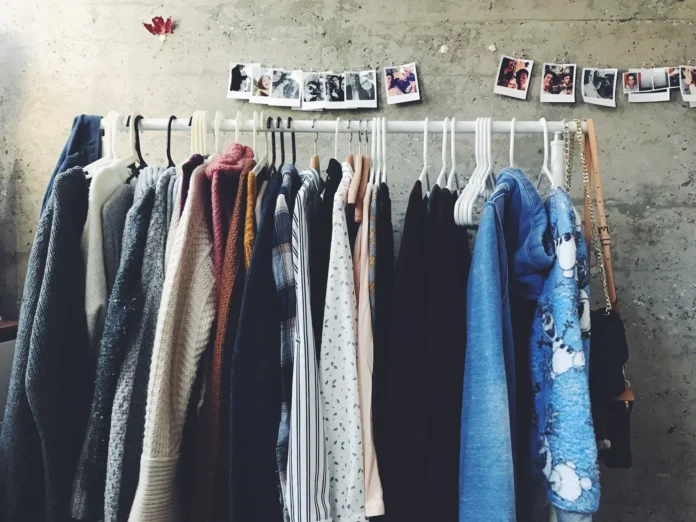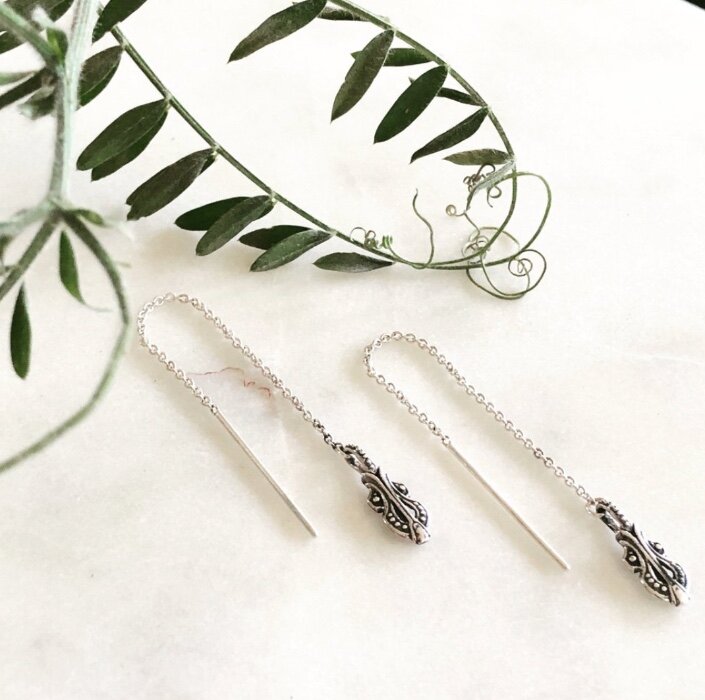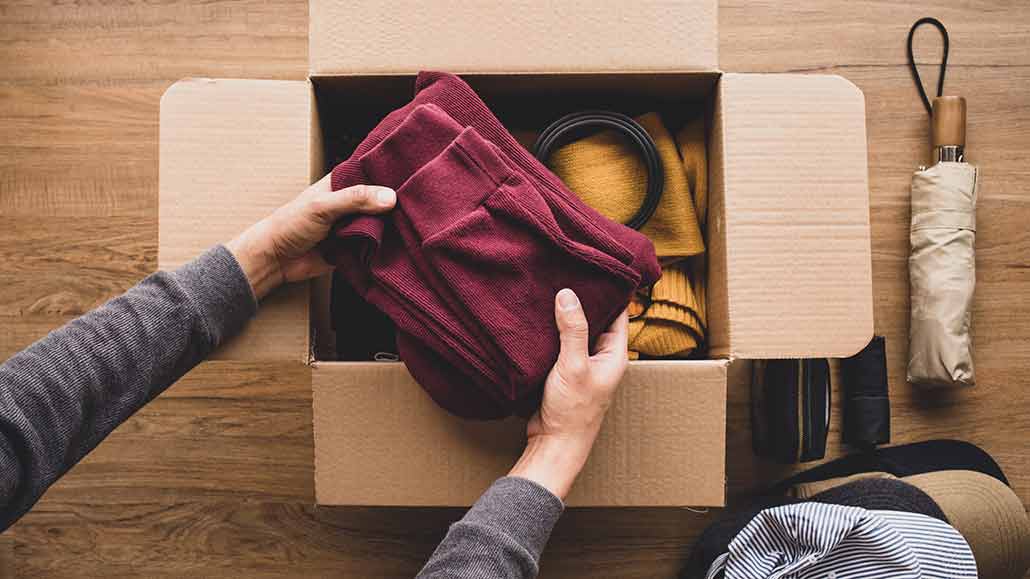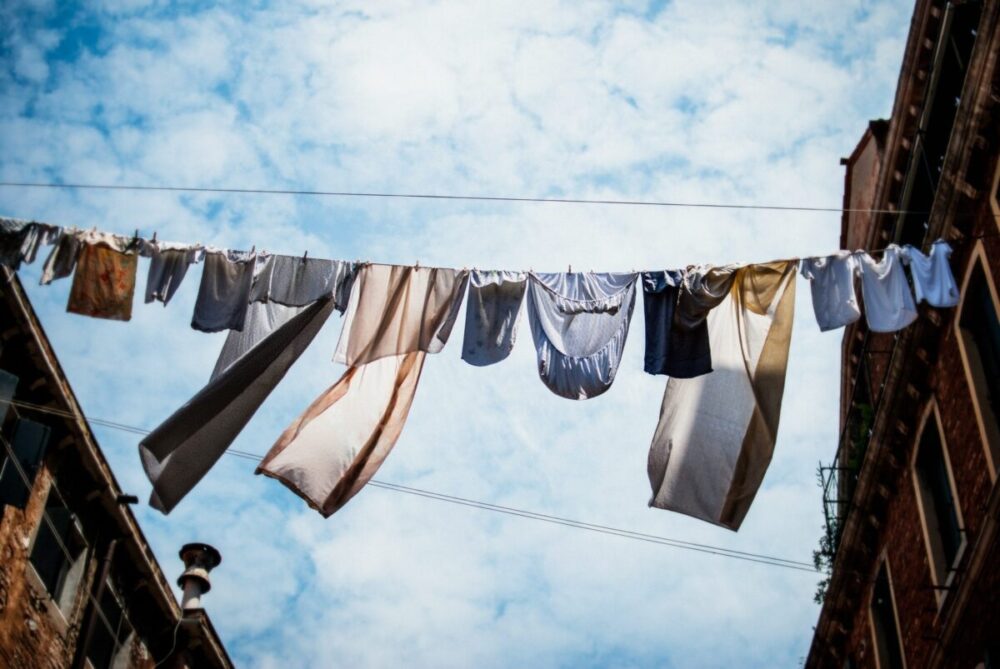
If you’re considering a more ethical wardrobe, you’re not alone. Sustainability and ethics play a large role in the world today. Around 10% of all carbon emissions come from the fashion industry, textile production causes around 20% of global clean water pollution, and just by washing synthetic material, it contributes half a million tonnes of microfiber to the ocean annually. Sustainability is about using something for its entire lifespan, recycling or reusing, and buying things from local or second hand sources.
Because of that, “shopping local” and “fast fashion” are buzzwords shoppers should pay attention to.
Environmental & Social Impacts of Fast Fashion
Fast fashion allows people to shop for rapidly produced clothing to keep up with the newest fashion trends, but inexpensive and mass-produced clothing has had an impact on the environment and society. People consider their clothes disposable which has caused an impact on water pollution and supply, energy consumption, chemical use, and the creation of waste. It also creates poor working environments from leading retail brands.
The average cost of a 250 gram shirt is around 2700 liters of water. This includes the water used to create cotton, which costs a whopping 11,000 liters of water for every kilogram. This is causing water tables worldwide to reduce as most cotton is made with irrigated water sources. One example is the Aral Sea in China which has lost 80% of its volume in just 40 years.
CO2 emissions are also of note. By 2030, the industry’s CO2 emissions are projected to increase over 60% to 2.8 billion tons per year, or the equivalent of 230 million vehicles driven per year.
These are just some of the impacts that the fashion industry is projected to have in the coming years, and any sustainable shopper should know what they are fighting against.
Be open to the idea of “second-hand clothing”

Second hand stores have been around for a while and really became trendy in the early 2000s. They combine the joy of shopping for a new item with the thrill of a scavenger hunt; you truly never know what you’re going to find. Try to look for high quality pieces as buying worn out or poor quality clothes will just contribute to your weekly trash collection.
You should also consider swapping clothes with friends or shopping at second-hand consignment shops. Swapping with friends or going to swap meets is a great way to explore the fashion of others and get an item for virtually free. Consignment and vintage shops are on the other end of the spectrum, and usually only feature high quality items at a higher cost.
How to Build Your Capsule Wardrobe
A capsule wardrobe is one that is composed of interchangeable clothing items that compliment each other and rarely go out of fashion. This naturally increases sustainability as your clothes will need replacements less frequently to keep up with trends or to help match new items, while replacing damaged pieces becomes as easy as picking your outfit in the morning.
Start with what you already own. Keep the pieces you find irreplaceable, and the items you find yourself wearing a lot. Barring seasonal clothing, if you have not worn it for a month, it can probably be donated. Once you have your clothing down to the bare necessities, start shopping for clothing with sustainable materials like bamboo, cotton, or silk. Look for bamboo underwear, organic cotton t-shirts, silk sweaters, wool trousers (these can work great in a business setting), and original denim jeans. Soon you will have a wardrobe that is not only easily replaceable, but easy to care for, simple to dress with, and hardy.
Choose Sustainable Accessories

As we mentioned, a big part of sustainability is, well, how sustainable an item is. The less often you have to replace an item and the more decomposable an item is, the better. While this largely applies to your everyday clothing, your accessories can also join the party.
Try to opt for accessories that can biodegrade if you throw them out, or accessories that are repairable. This could be easily repairable sustainable prescription sunglasses. Before purchasing a pair make sure to refer to trustworthy and popular brands, such as EyeBuyDirect, as nothing seems more important than one’s eyesight and it’s always a good idea to prefer quality to cost.
Other accessories may include bracelets made from organic materia, a necklace with interchangeable pendants, scarves made with recycled wool, vegan handbags, and more. If you’re ever questioning a purchase, just look at the tag, and find out if the material is biodegradable.
For example, Doshi offers vegan handbags and other accessories made from pineapple leather and kraft paper. These materials are up to 90% biodegradable, yet extremely durable!
Donate your clothing or recycle it
Even with your capsule wardrobe, you’re going to get sick of your clothing and accessories. Rather than throwing them out, donate them, or swap them with your friends. The adage “one man’s trash is another man’s treasure” holds true to today if the popularity of vintage stores is any indicator, and even if you cannot find an interested person, your clothing can always be used by the needy and less fortunate.
Throwing clothes in the trash to be hauled away to yet another landfill is at best a poor use of the item, and at worst contributing to the overall sustainability problem. Recycle your old clothes for other purposes (like cleaning clothes or patchwork), swap them with friends who have been eyeing that item for years, or take them to your local recycling facility.
Find Textile Recycling Facilities for Non-Wearable Clothing

The major majority of clothing and textiles are 100% recyclable. This includes not only organic material clothing, but clothes that are made from artificial fabric (but you should still avoid buying these when possible.) According to the EPA, 5.8% of all municipal solid waste was caused by textile while the recycling rate remains on the low end at 14.7%. Because even natural fibers can release greenhouse gasses as they decompose, recycling textiles is even more important.
If you cannot donate or swap your clothes, recycling facilities are becoming more common, at least in the United States. Curbside pickup is rare, but many counties and municipalities are starting to contract with local recycling facilities.
You can usually find them by Googling “clothes recycling in my area.” Simply take your clothes to whatever recycling company your country contracts with, and they should take care of the rest without any additional cost. Also check to see if your clothing is from a brand with take-back programs like Nike or Patagonia.
Just remember that donating is the better option. If your clothes are still in decent condition, donate them to a local second hand store or through online resellers.
Put Quality First
Whether you’re shopping at second hand stores or first-hand retailers, make sure that you’re getting an item that can stand up to the average wear and tear of your daily life. While some of this decision will come down to how hard you are on your clothes, you can mostly rely on clothing brand reports to make your decision.
Second hand stores are a great way to recycle, but if your “new” item wears out in a couple of months, you’ll be back to square one. If you’re shopping at a retailer, check out the reviews online and the materials. Synthetic materials may last a long time, but they will eventually need to be disposed of, and because they don’t degrade, will clog up the environment for a long time.

Conclusion
Sustainability is a task given to the largest corporation, and the smallest individual, and it never hurts to play your part. The environment is on everyone’s mind as summers and winters continue to break records we’d rather they leave alone. Something as simple as your daily outfit can play a large role in convincing retailers to source sustainably and prevent further damage as your clothes eventually wear out. In the end, you can find ways to make your wardrobe easier to manage, resiliently stylish, eco-friendly, and sustainable.








